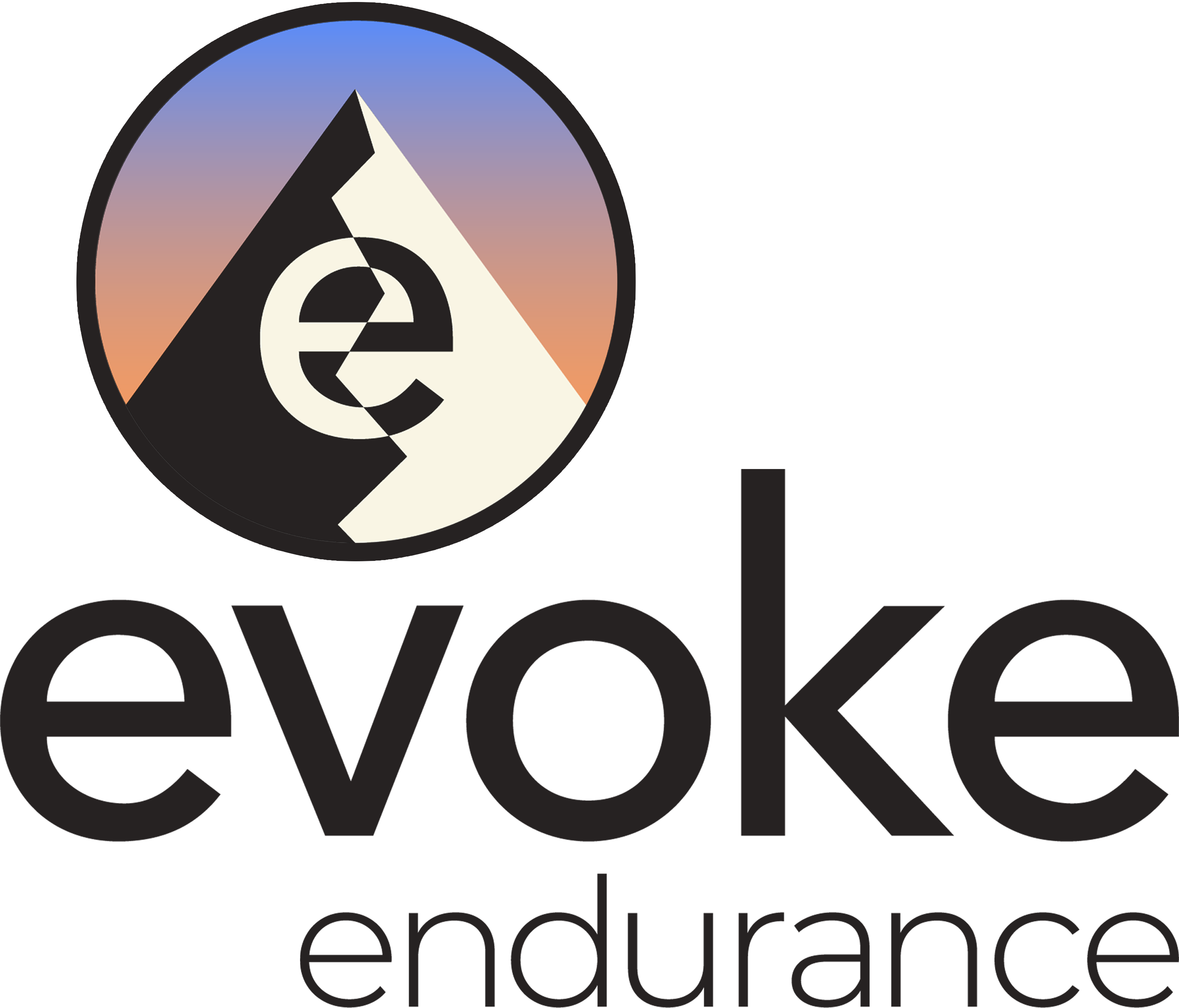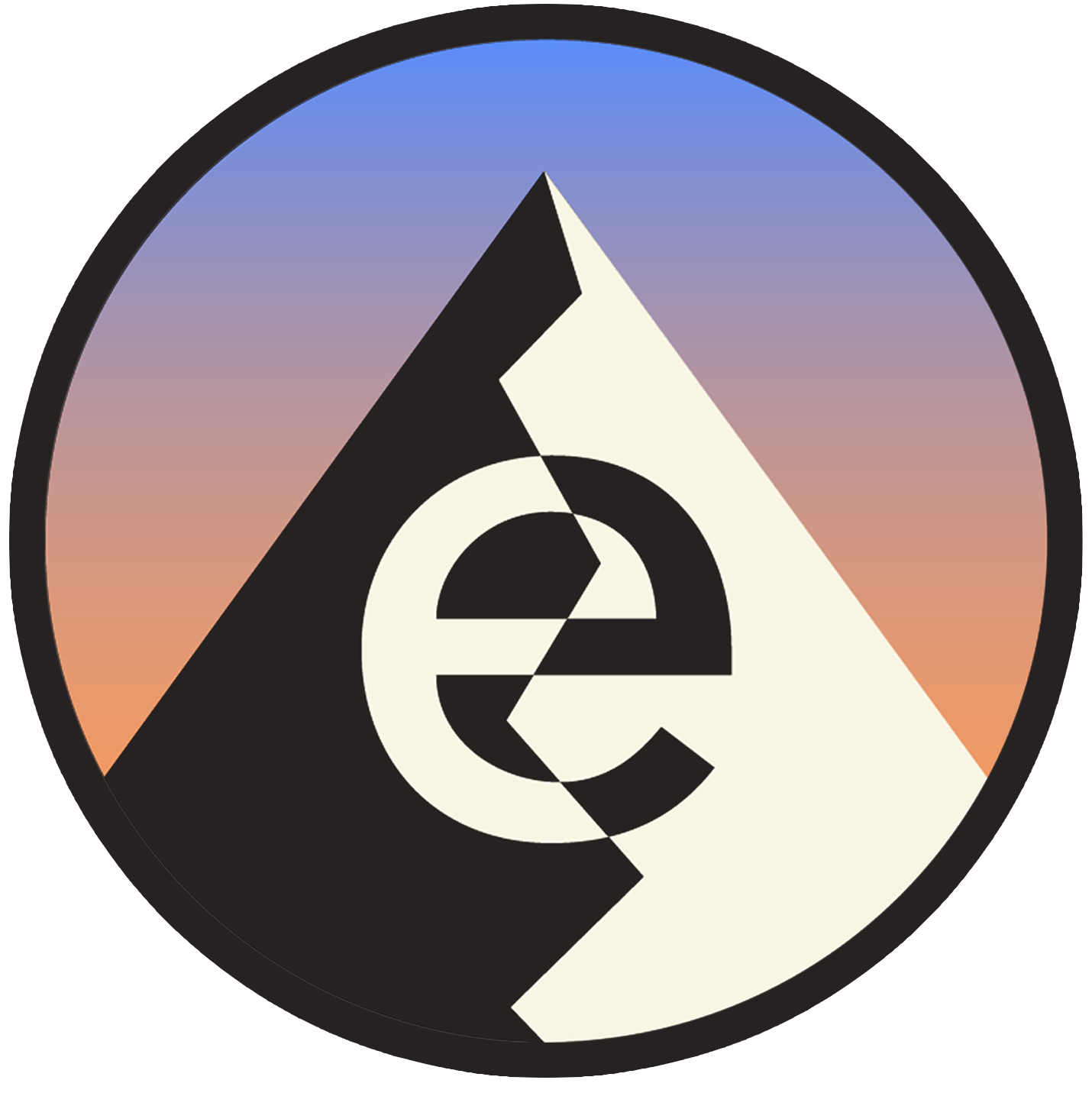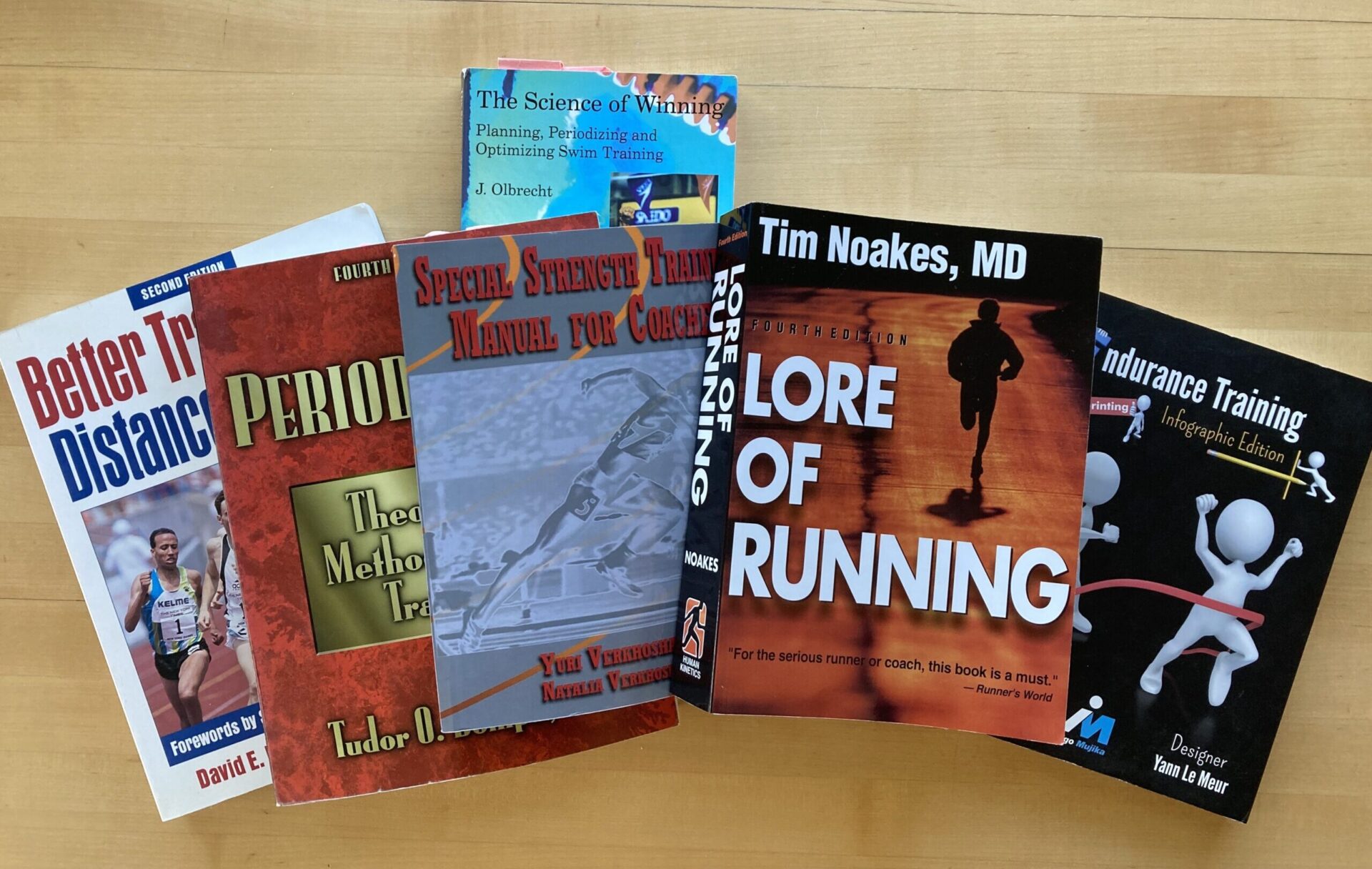Bibliography:
Over the years, I’ve had requests for a list of books that I have found especially useful in helping me develop my training knowledge base. Several of them are always close at hand on my desk as references.
The goal of all of my writing and speaking has been to distill what I have learned from my coaching career and the teachings of great coaches and scientists. I’ve tried to combine ideas ranging from physiology to training theory and practice into a coherent body of information accessible to any interested person.
I believe that having an understanding of the science of training is essential. But it’s even more important to understand the methods that the great coaches have used to produce top athletes. These coaches and athletes are on the front lines of developing new approaches to training. The coaches invent the best practices, and later the scientists explain them. When you see the following coaches’ success, you will understand why I feel it is worth a close examination of their methods.
The following list is presented in roughly chronological order, explaining what I found helpful in each resource and whether or not I think it might benefit other training theory nerds. I’ve given star ratings to the various books to indicate their importance. The three-star books are the highest priority. The two-star books are only for the super nerds out there.
#1) The Science of Swimming by James Councilman. In high school in 1970, my swimming coach required everyone on the team to read this. Councilman had a phenomenal coaching career producing over 60 Olympians, at least a dozen gold medalists, and world record holders, including Mark Spitz with his seven gold medals in the 1972 Munich Olympics. This book was seminal for me in that it made me realize that there was even such a thing as science when it came to training. Not on my must-read list, but I need to give it a hat tip.
#2) Theory and Methodology of Training by Tudor Bompa. A speed skating Olympian friend gave me his ratty copy of this book. In it, I got my first glimpse behind the iron curtain at the highly structured Soviet sport science by Bompa, a Romanian. I’d never heard of the concept of periodization in training for sports. This method was first developed for Soviet speed and power field athletes like jumpers and throwers and later applied to endurance sports. I saw that overarching concepts covered all training regardless of sport. **
#3) Lore of Running by Tim Noakes. Noakes, a researcher and Ph.D. in Exercise Science, first published this book in 1986, and it has at least four editions. If you are interested in, and I mean VERY interested in, taking a far deeper dive into the study of endurance training science and are not dissuaded by its 800-plus pages, I can’t recommend this book highly enough. For a couple of years, I studied it like a textbook. It is where I learned the physiological underpinnings of endurance, which take up only 175 pages. The depth and breadth of information covered include the historical figures of modern distance running, starting with a Native American man named Deerfoot who in 1862 traveled to England and in four months raced over 400 miles capping that trip with a 51 minute 10mile. How can you not love that stuff? ***
#4) Running the Lydiard Way by Arthur Lydiard. The 70s saw an explosion in the popularity of running in the general public. This New Zealand coach first gained international fame when his star athlete, Peter Snell, in 1960 became, and still is, the only runner to win both the 800m and 1500m in the same Olympics. Lydiard’s training philosophy bucked the then-current popularity of the heavy use of interval training that dominated distance running in the ’40s and ’50s. Instead, he centered on developing a huge aerobic base, after which he layered on various forms of higher-intensity running. Lydiard’s later work in Finland led to 3 gold medals in the 1972 Olympics in the 1500, 5000, and 10,000m men’s races. **
#5) Better Training for Distance Runners by Peter Coe. Coe coached his son Sebastian throughout a stunningly successful career as a middle-distance runner, winning Olympic gold in the 1500m in 1980 and 84. He set 3 world records in the span of 41 days, and most amazingly, his 800m world record set in 1981 stood till 1997. Coe’s use of strength training and a muscular endurance circuit in his base training period was novel at the time. The amount of hard work Coe could pack into some of his workouts in the peak years of his career has led many to assume that all of Coe’s training was mainly high-intensity. What gets overlooked is that his early career involved a lot of high mileage weeks and that much of the fast running in his best years was fast but not metabolically very high intensity. He was running very fast in his workouts but in an aerobic state. **
#6) Renato Canova on the LetsRun.com Forum. In the early 2000s, I discovered Canova, writing on this forum. He gave detailed explanations and answered questions on subjects ranging from big-picture training theory down to granular looks at particular workouts his athletes did, along with why he was doing that training. I was like a sponge when reading his candid and open way of speaking about the training of some of the best runners in the world. Canova arguably has the greatest record of any running coach in producing Olympic and World Champions and world record holders in events from the 800m to the marathon. The only problem is that English is not his native language, and much of his writing requires multiple readings to grasp fully. But the nuggets he dropped throughout his posts are pure gold and well worth the work. A couple of folks have created distillations of his writings. They’re good and cover big-picture topics pretty well. But they miss many of those nuggets you can only get when you get into the weeds with his words. His posts are snippets and are not written like a book where ideas are laid out in order. They’re randomly shuffled together. I have all of his writings in a few different documents, and when I retire, I will edit them to put them in an order that makes more sense. You will have to do some mining to uncover the gold, but it will be worth it. ***
#7) Block Training System for Distance Runners by Yuri Verkhoshansky. Unlike Canova, Verkhoshansky presents his information in meticulous order, like the scientist he is, being a product of the Soviet sport science education system. The writing has been translated from Russian to English by his daughter Natalia who also holds a Ph.D. in exercise science. WARNING: This is not light bedside reading. The writing is like a scientific paper and is heavy on terminology from Soviet sport science. You may have to refer back to the definitions. But the information is all there, and while it is a slog to comprehend fully, I know nothing like this book in print. The slog is well worth it. You will see where I came up with the gym ME routine that has become popular and successful with mountain athletes. ***
#8) Special Strength Training Manual for Coaches by Yuri Verkhoshansky. When the inventor of what has come to be called “plyometrics” writes a book about strength training, you should pay attention. While the whole book contains a wealth of information, even about bodybuilding, Chapter 7, titled Special Strength Training in Cyclic Sport, is where you will probably spend most of your time. Cyclic sports are those where the same movement is done for hundreds and even thousands of repetitions. Running, rowing, swimming, cycling, and cross-country skiing are all cyclic sports. In these sports, muscular endurance is the type of strength that is needed. The same caveats that apply to his book mentioned above apply to this one. Excuse the pun, but it is heavy lifting. You must want to learn this stuff to get anything from both of these books ***
#9) The Science of Winning by Jan Olbrecht, while focused on swimming this book has application to all endurance sports. Olbrecht makes extensive use of blood lactate level monitoring in his training programs. This is a worthwhile read, even if you are not planning to use a lactate meter. Almost impossible to find the print version any longer. **
#10 Endurance Training Infographic Edition by Inigo Mujika and Yann Le Meur. This is not one that I used as a reference. However it is so well done I do recommend it for those seeking a great introduction to all the attributes of endurance. The infographic style and the well written text combine to present some of the more complex concepts in a very easily digestible form. ***



 Facebook
Facebook

I’ll immediately clutch your rss as I can not to find your e-mail subscription hyperlink
or e-newsletter service. Do you have any? Please
permit me know so that I may subscribe. Thanks.
Ricardo:
You should be able to see a small pop-up window on the right side of the homepage that asked you to enter your email and then subscribe and you will be on the newsletter list. If you’re not seeing this, it may be that you have some sort of pop-up blocker.